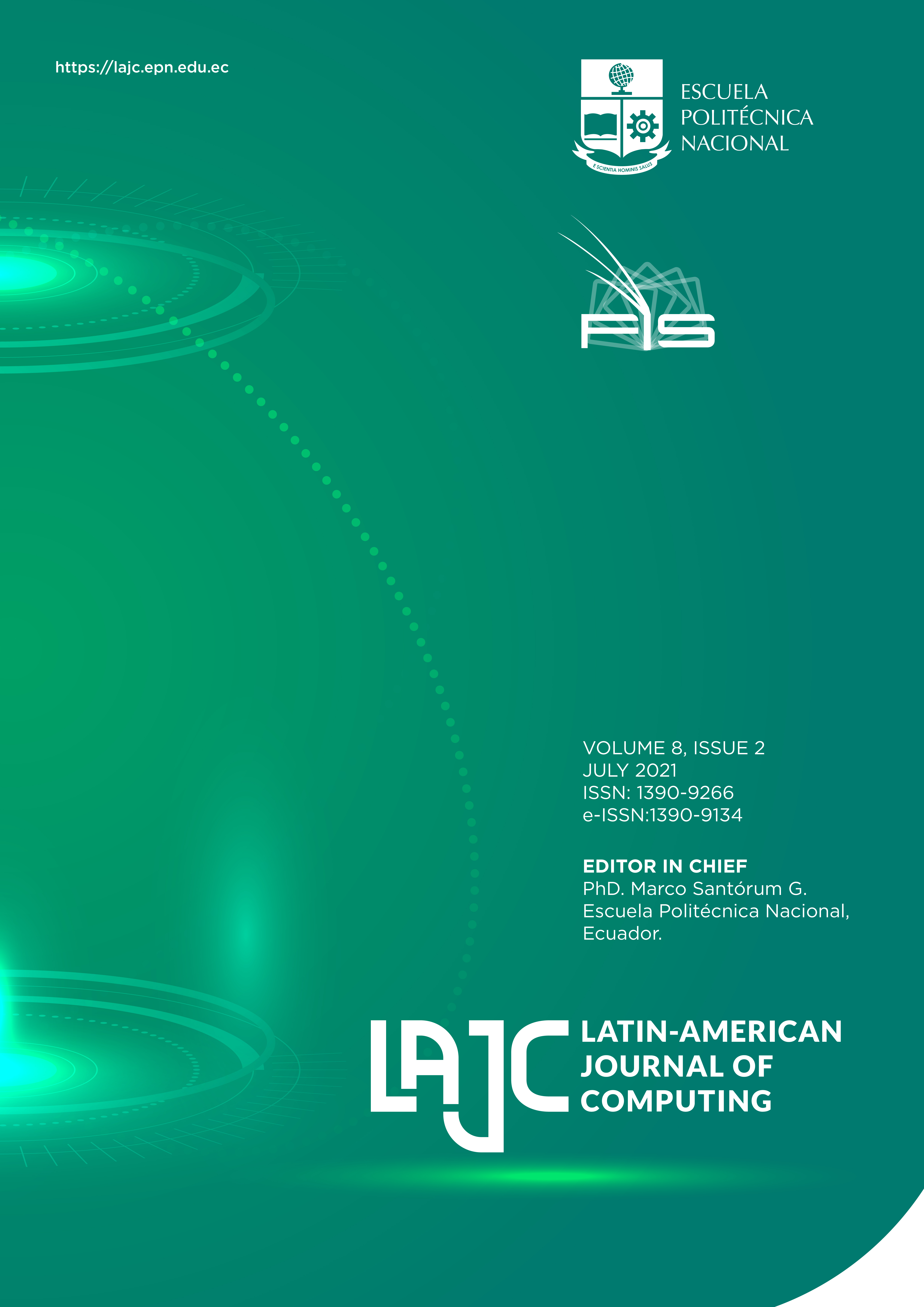Object Detection and Movement Patterns Using Neural Networks and Genetic Algorithms for the Identification of Armed Robbery
Keywords:
Machine Learning, Object Detection, Movement Pattern DetectionAbstract
In Latin America there are 42 of the 50 most violent cities in the world, in Peru in 2019 9.7% of criminal acts with firearms were carried out in urban areas and in cities with 20,000 or more inhabitants the percentage rose to 10.2%, but the complaints, due to lack of evidence, generated in cities like Lima, only 19.46% of arrests. The members of the police force have devices, vehicles and tools that allow them to carry out their functions in a safe manner, however, they do not have an effective mechanism, which allows to identify an armed robbery and to concentrate their efforts on carrying out a timely intervention. Therefore, the present research develops an algorithm based on Recurrent Neural Networks with OpenCv / YOLOv3 combined with the Genetic Algorithms technique for the detection of objects and movement patterns with 96.5% accuracy, allowing early detection of a crime perpetrated under the modality of armed robbery.
Downloads
References
Y. Ming y C. Camp Yeakey: “A Comparative Study of the World’s Most Dangerous Cities: Violence as the Ultimate Public Heath Challenge, Insights of Anthropology”, vol. 2, nº 1, pp. 67-85, (2018).
INEI,: Estadísticas de Seguridad Ciudadana, Noviembre 2018 – Abril 2019, p. 39, (2019).
R. Vajhala, R. Maddineni, y P. Raj Yeruva: “Weapon Detection in Surveillance Camera Images, Bleking Institute of Technology”, 2016.
M. Nakib, M. Sakibul Hasan, R. Tanvir Khan y J. Uddin: “Crime Scene Prediction by Detecting Threatening Objects Using Convolutional Neural Network”, IEEE Explore, Uk, 2018.
O. Stenroos: “Object detection from images using convolutional neural networks, Aalto University Master’s Programme in Computer, Communication and Information Sciences”, 2017.
M. Grega, A. Matiolanski, P. Guzik y M. Leszczuk: “Automated Detection of Firearms and Knives in a CCTV Image, Murali Subbarao”, 2015.
Google Cloud, Business impacts of machine learning, Google Cloud, 2017.
F. Sancho Caparrini: “Introducción al Aprendizaje Automático”, 2017/09/23. [En línea]. Available: http://www.cs.us.es/~fsancho/?e=75. [Último acceso: 2019/02/18].
R. Velasquez y G. Acuña,: “Entrenamiento de Redes Neuronales Recurrentes para Sistemas Dinámicos Tipo NARMAX Y NOE, SBIC Sociedad Brasileira de Inteligencia Computacional”, 2016.
J. Gelvez Prieto: “Redes neuronales convolucionales y redes neuronales recurrentes en la transcripcion automática, Universidad Nacional de Colombia”, 2019.
Ministerio de Justicia y Derechos Humanos, Código Penal Peruano, Lima: Ministerio de Justicia y Derechos Humanos, 2016.
Downloads
Published
Issue
Section
License
Copyright Notice
Authors who publish this journal agree to the following terms:
- Authors retain copyright and grant the journal right of first publication with the work simultaneously licensed under a Creative Commons Attribution-Non-Commercial-Share-Alike 4.0 International 4.0 that allows others to share the work with an acknowledgement of the work's authorship and initial publication in this journal.
- Authors are able to enter into separate, additional contractual arrangements for the non-exclusive distribution of the journal's published version of the work (e.g., post it to an institutional repository or publish it in a book), with an acknowledgement of its initial publication in this journal.
- Authors are permitted and encouraged to post their work online (e.g., in institutional repositories or on their website) prior to and during the submission process, as it can lead to productive exchanges, as well as earlier and greater citation of published work.
Disclaimer
LAJC in no event shall be liable for any direct, indirect, incidental, punitive, or consequential copyright infringement claims related to articles that have been submitted for evaluation, or published in any issue of this journal. Find out more in our Disclaimer Notice.










